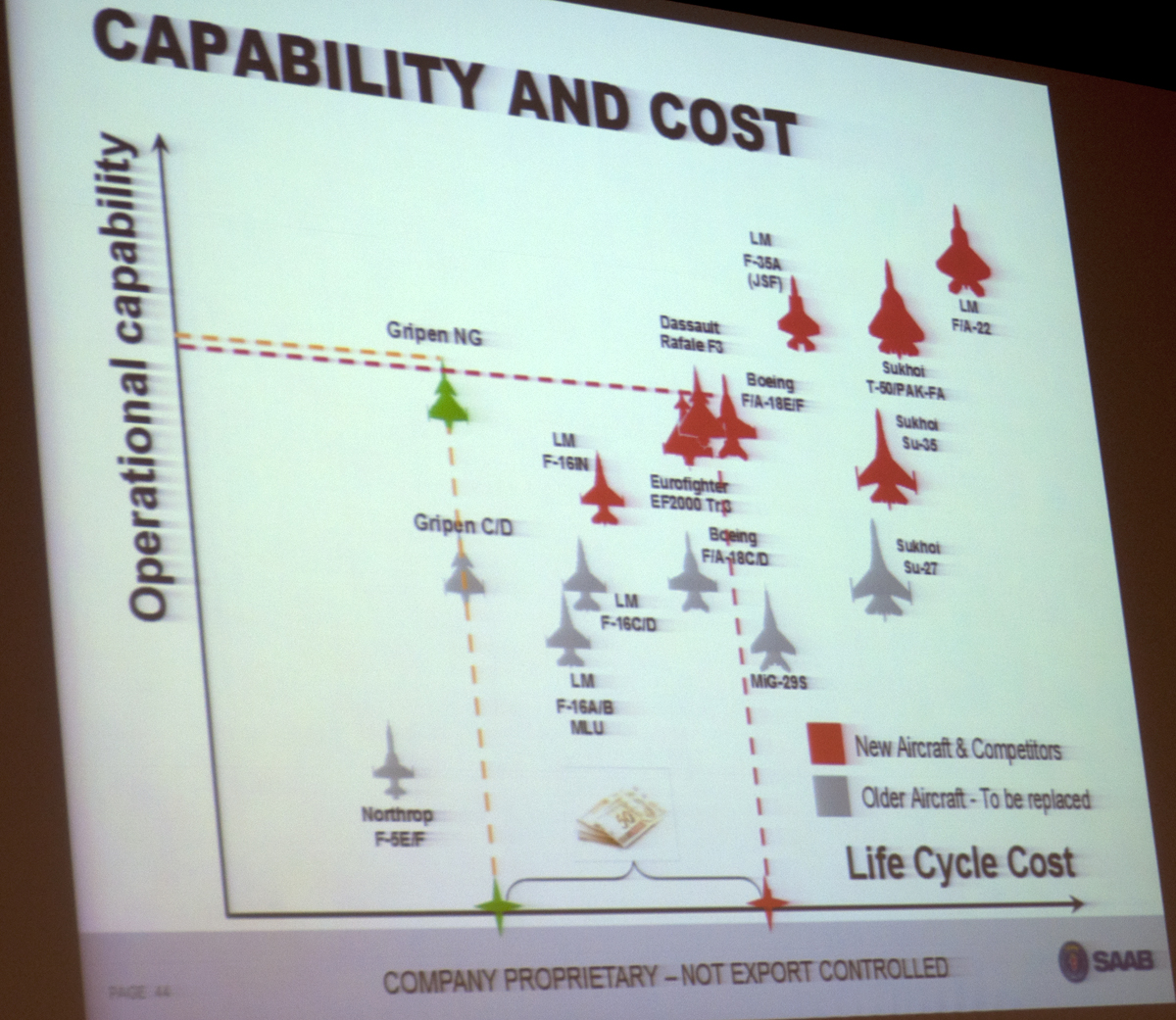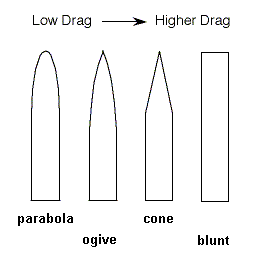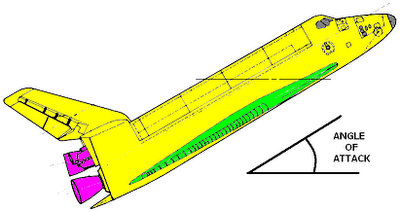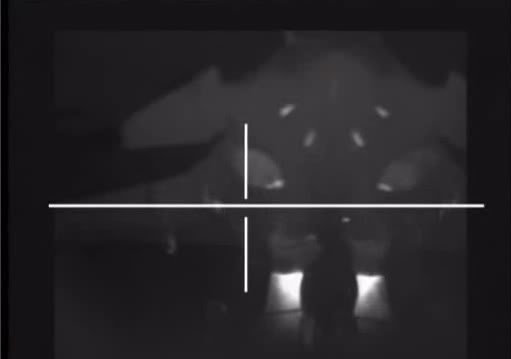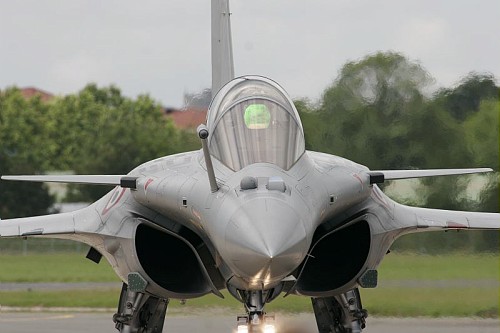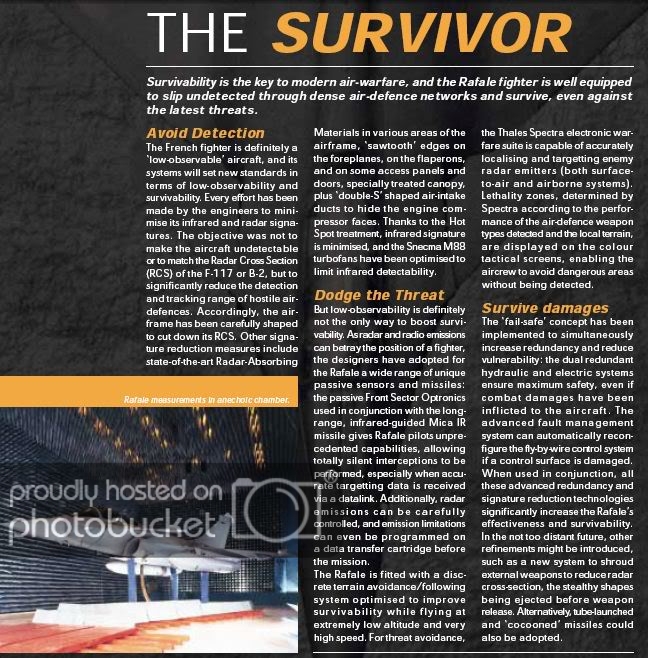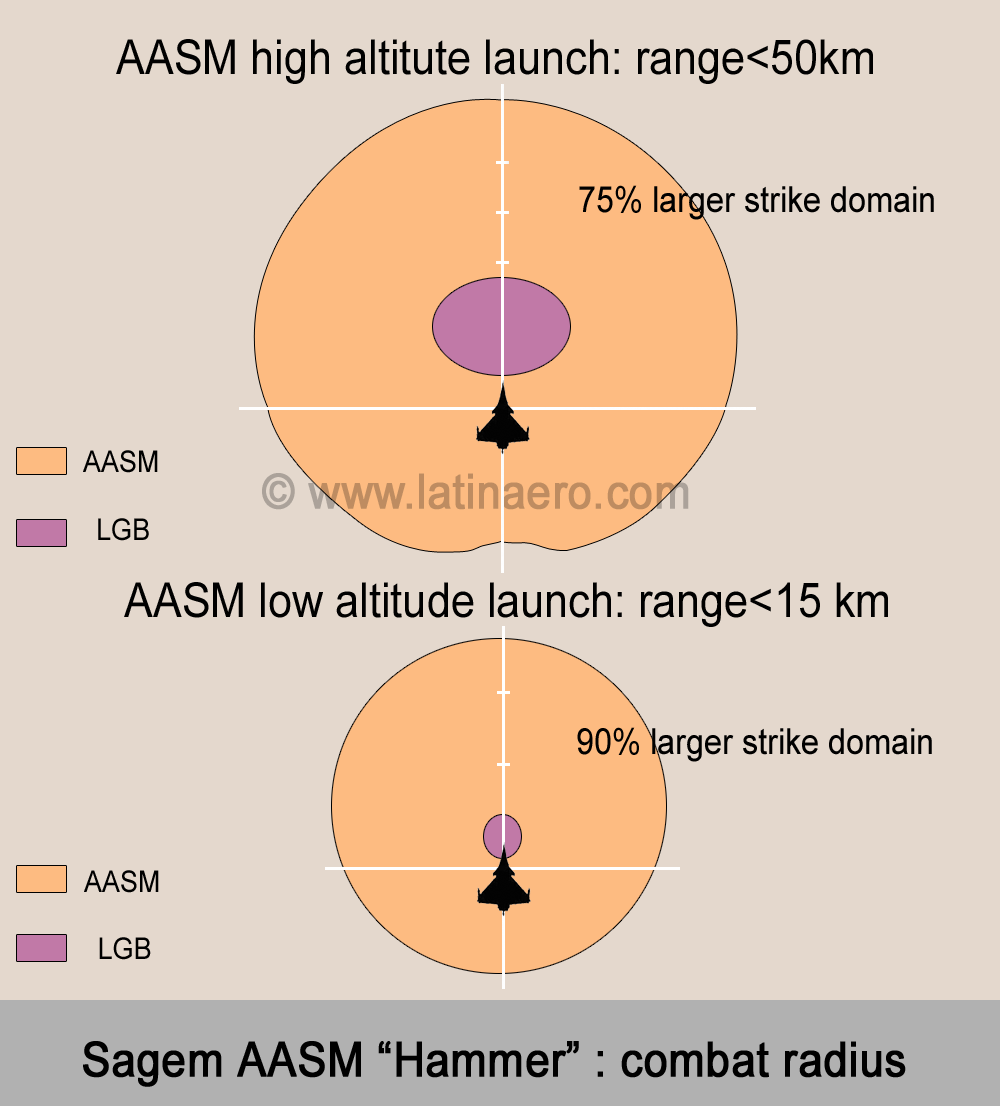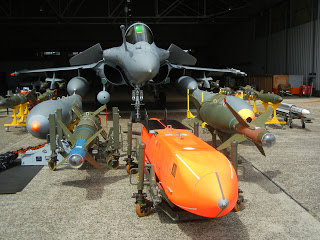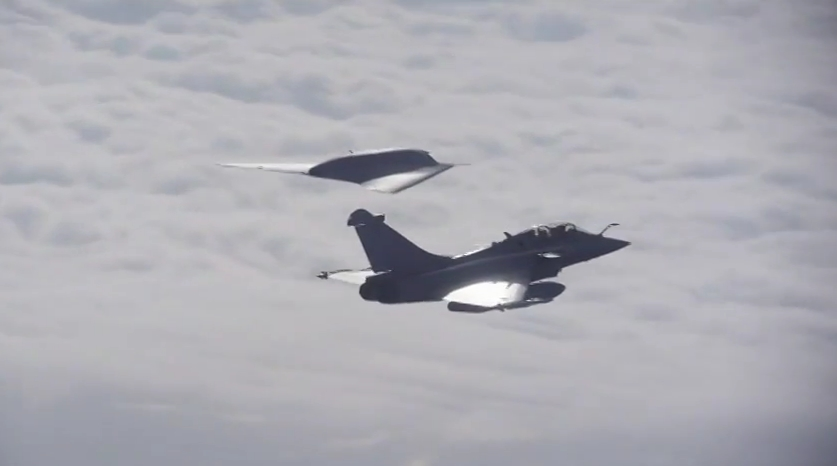اخبار عن تعثر صفقة الهند
The Rafale negotiations with Dassault of France appear to have reached a deadlock that is as much as anyone can tell. When the deal is made the terms will probably surprise everybody. To briefly summarise, India agreed in principle to acquire 126 combat Rafale aircraft from Dassault of France, with the first 18 manufactured in France and the rest manufactured by HAL. The sticking points are price which started at $10 Billion and is now about double that, and guarantee of aircraft quality which was in the original tender. India insists that Dassault guarantee all 126 work correctly, whereas Dassault is unwilling to guarantee more than those manufactured in France. It does not even matter at this point who is right or wrong, because the stakes are high for both parties. India is sorely deficient in IAF squadrons, and Dassault is sorely deficient in international orders for the Rafale (it has none presently, and none in sight). If both parties walk away from the deal, there will be a perception that the IAF is not adequately provisioned and for Dassault it could mean the end of the Rafale.
In the table below the specifications are from Wikipedia and the photo links point to Airliners.net. The first four entries are already in use in the Indian Air Force. The Mirage-2000 is at the top of the list because the MMRCA tender began as a consequence of the Indian Air Force (IAF) being unable to buy a new batch of Mirage-2000s, since the line was being replaced by the Rafale. The table does not even list the Typhoon, Gripen or F-16 and F-18 because in this eleventh hour, they are not options anymore. In the table, the thrust numbers are without and with afterburner turned on. The afterburner adds power but it produces a visible infrared signature which is easy to detect in the sky. Supercruise refers to the ability to maintain supersonic flight without the afterburner, a useful characteristic in a fighter jet. Supercruise is not stealth but at least it is not as visible as an afterburner. The weight numbers are dry weight and take-off weight, so the difference determines how much you can load the aircraft with weapons pods and extra fuel. The speed number is the speed at high altitude.
Photos Engines Thrust (kN) Weight (lb) Speed (Mach)
Mirage-2000 1 x Snecma 64/95 16k/37k = 21k 2.2
LCA 1 x GE 53/89 14k/29k = 15k 1.6
Mig-29 OVT 2 x Klimov 162 24k/44k = 20k 2.25
Su-30 MKI 2 x Lyulka 246 40k/85k = 45k 2.35
Rafale 2 x Snecma 100/151 22k/54k = 32k 1.8
MiG-35 2 x Klimov 106/176 24k/65k = 41k 2.35
Many note that the IAF has had a tradition of diversity in its aircraft purchases meaning that the IAF has a large variety of aircraft in small numbers, and some have criticised this fact opining that diversity leads to higher cost, lack of specialised training of pilots, lack of spares, confusion in deployment and a general lack of focus. My opinion is that this diversity has roots in an inability to commit large amounts of money for large purchases and that war is sufficiently uncertain that this diversity can be an asset and I hope the IAF continues its diversity in acquisition. Flying time on combat aircraft is very expensive, so adequate training and honing of skills under pressure is always a problem for any nation, and which has to be considered separately. So those who recommend buying more MiG or Sukhoi because India already has these aircraft are not practical.
Now keep in mind that in a practical world, asking price has nothing to do with the cost of manufacture, but rather the value to the purchaser. The focus of the USA has been on stealth, and the F-35 is projected as the future of the US Air Force. The F-35 was supposed to be economical but currently the price is pegged at over 135 million USD and rising. But the F-35 is irrelevant for India because the USA is not likely to sell the F-35 to India anytime soon, and equally important, it is not likely to sell F-35 to Pakistan anytime soon for fear that China would reverse engineer it. The F-35 is also high maintenance. So there is no point comparing Rafale to the F-35 because the F-35 is out of reach. And further, although many point out that Dassault appears to be asking more for the Rafale than the cost of an F-35, this is not strictly true because some of the cost on the Rafale tender has to do with technology transfer and some has to do with lifetime cost, rather than purchase cost.
So why is India hell bent on buying the Rafale at double the cost of the Su-30 MKI? Indeed the table above shows the Russian aircraft to be faster, more agile (with thrust vectoring) and with high lifting capability, and India already has Russian aircraft modified to take off and land on aircraft carriers, so what is the attraction of the Rafale? Beyond visual range (BVR) is now the new focus of air power, so the radar capability is all important. A slower aircraft that can detect an enemy aircraft miles away, can deploy fire and forget missiles to shoot down that enemy and then leave, so does not need dogfighting ability anymore. Such radar has to detect signatures at different frequencies over a wide range in very short bursts which are harder to detect and to combine the signatures rapidly to identify friend or foe and locate position while still miles away. The F-35 is supposed to be better than the Rafale because it not only has such radar comparable to the Rafale, but also has a very faint radar signature.
Which raises the questions, if the F-35 has the radar of the Rafale and one further critical component namely stealth, and it costs less than the Rafale, why would India want to buy the Rafale and why does Dassault ask such a high price? The answer to both is that India is not allowed to buy the F-35. The Russian PAK-FA far off in the future is the only way India will get stealth aircraft, so for now it has to settle for improving the BVR capability, so it needs the Rafale because the Rafale has a good radar and weaponry to match. The irony is that if radar is the main reason to purchase the Rafale, then a cynical person would ask if India will actually get what it pays for. Detecting and analysing a radar signature is not only a hardware issue, but also the number crunching, and a cynical person would doubt that Dassault would transfer source code and equations describing the algorithms used for detection of the signature. It is far more likely to transfer executables which are black boxes and which India cannot modify in future. It almost appears that India would be better off allowing France to build all 126 aircraft and forget about the technology transfer for now.
It is always useful to ask the question what is your enemy doing about the same problem? India has two enemies namely Pakistan and China. Pakistan has mostly older US aircraft such as F-16, but also the goodwill of the USA (useful at time of war), more nuclear weapons with no ban on first strike, and you can bet on it that any war would automatically bring in China to support Pakistan. Now if you look at China you see a country which has almost no imports of combat aircraft, in other words China does not waste its money on importing combat aircraft. China has spent its money becoming unsurpassed in the world in the art of reverse engineering foreign combat aircraft both Russian and American. It is anyone’s guess as to how well these reverse engineered planes would actually fare in a combat, but it has been reported that Chinese Chengdu aircraft have been exported to Pakistan. To give the Chinese credit, the only reason China is capable of reverse engineering complex systems, is because Chine has excellent manufacturing capability, because reverse engineering is mostly manufacturing and testing.
India does not yet have a robust manufacturing capability, so at least when negotiating the Rafale deal, India might take this into consideration. If India forgets about technology transfer for now, allows complete manufacture in France and in return insists on an accelerated delivery schedule of all 126 aircraft, and a significantly lower price point of no more than 100 million USD per aircraft including spares and maintenance and payment after delivery, perhaps even loaner aircraft in the interim, then that might be a way out of the deadlock. Meanwhile India should be buying technology transfer of all the individual technologies that go into an advanced combat aircraft such as Rafale with the intention of using that technology in the next generation LCA or MCA manufactured by HAL.
The Rafale negotiations with Dassault of France appear to have reached a deadlock that is as much as anyone can tell. When the deal is made the terms will probably surprise everybody. To briefly summarise, India agreed in principle to acquire 126 combat Rafale aircraft from Dassault of France, with the first 18 manufactured in France and the rest manufactured by HAL. The sticking points are price which started at $10 Billion and is now about double that, and guarantee of aircraft quality which was in the original tender. India insists that Dassault guarantee all 126 work correctly, whereas Dassault is unwilling to guarantee more than those manufactured in France. It does not even matter at this point who is right or wrong, because the stakes are high for both parties. India is sorely deficient in IAF squadrons, and Dassault is sorely deficient in international orders for the Rafale (it has none presently, and none in sight). If both parties walk away from the deal, there will be a perception that the IAF is not adequately provisioned and for Dassault it could mean the end of the Rafale.
In the table below the specifications are from Wikipedia and the photo links point to Airliners.net. The first four entries are already in use in the Indian Air Force. The Mirage-2000 is at the top of the list because the MMRCA tender began as a consequence of the Indian Air Force (IAF) being unable to buy a new batch of Mirage-2000s, since the line was being replaced by the Rafale. The table does not even list the Typhoon, Gripen or F-16 and F-18 because in this eleventh hour, they are not options anymore. In the table, the thrust numbers are without and with afterburner turned on. The afterburner adds power but it produces a visible infrared signature which is easy to detect in the sky. Supercruise refers to the ability to maintain supersonic flight without the afterburner, a useful characteristic in a fighter jet. Supercruise is not stealth but at least it is not as visible as an afterburner. The weight numbers are dry weight and take-off weight, so the difference determines how much you can load the aircraft with weapons pods and extra fuel. The speed number is the speed at high altitude.
Photos Engines Thrust (kN) Weight (lb) Speed (Mach)
Mirage-2000 1 x Snecma 64/95 16k/37k = 21k 2.2
LCA 1 x GE 53/89 14k/29k = 15k 1.6
Mig-29 OVT 2 x Klimov 162 24k/44k = 20k 2.25
Su-30 MKI 2 x Lyulka 246 40k/85k = 45k 2.35
Rafale 2 x Snecma 100/151 22k/54k = 32k 1.8
MiG-35 2 x Klimov 106/176 24k/65k = 41k 2.35
Many note that the IAF has had a tradition of diversity in its aircraft purchases meaning that the IAF has a large variety of aircraft in small numbers, and some have criticised this fact opining that diversity leads to higher cost, lack of specialised training of pilots, lack of spares, confusion in deployment and a general lack of focus. My opinion is that this diversity has roots in an inability to commit large amounts of money for large purchases and that war is sufficiently uncertain that this diversity can be an asset and I hope the IAF continues its diversity in acquisition. Flying time on combat aircraft is very expensive, so adequate training and honing of skills under pressure is always a problem for any nation, and which has to be considered separately. So those who recommend buying more MiG or Sukhoi because India already has these aircraft are not practical.
Now keep in mind that in a practical world, asking price has nothing to do with the cost of manufacture, but rather the value to the purchaser. The focus of the USA has been on stealth, and the F-35 is projected as the future of the US Air Force. The F-35 was supposed to be economical but currently the price is pegged at over 135 million USD and rising. But the F-35 is irrelevant for India because the USA is not likely to sell the F-35 to India anytime soon, and equally important, it is not likely to sell F-35 to Pakistan anytime soon for fear that China would reverse engineer it. The F-35 is also high maintenance. So there is no point comparing Rafale to the F-35 because the F-35 is out of reach. And further, although many point out that Dassault appears to be asking more for the Rafale than the cost of an F-35, this is not strictly true because some of the cost on the Rafale tender has to do with technology transfer and some has to do with lifetime cost, rather than purchase cost.
So why is India hell bent on buying the Rafale at double the cost of the Su-30 MKI? Indeed the table above shows the Russian aircraft to be faster, more agile (with thrust vectoring) and with high lifting capability, and India already has Russian aircraft modified to take off and land on aircraft carriers, so what is the attraction of the Rafale? Beyond visual range (BVR) is now the new focus of air power, so the radar capability is all important. A slower aircraft that can detect an enemy aircraft miles away, can deploy fire and forget missiles to shoot down that enemy and then leave, so does not need dogfighting ability anymore. Such radar has to detect signatures at different frequencies over a wide range in very short bursts which are harder to detect and to combine the signatures rapidly to identify friend or foe and locate position while still miles away. The F-35 is supposed to be better than the Rafale because it not only has such radar comparable to the Rafale, but also has a very faint radar signature.
Which raises the questions, if the F-35 has the radar of the Rafale and one further critical component namely stealth, and it costs less than the Rafale, why would India want to buy the Rafale and why does Dassault ask such a high price? The answer to both is that India is not allowed to buy the F-35. The Russian PAK-FA far off in the future is the only way India will get stealth aircraft, so for now it has to settle for improving the BVR capability, so it needs the Rafale because the Rafale has a good radar and weaponry to match. The irony is that if radar is the main reason to purchase the Rafale, then a cynical person would ask if India will actually get what it pays for. Detecting and analysing a radar signature is not only a hardware issue, but also the number crunching, and a cynical person would doubt that Dassault would transfer source code and equations describing the algorithms used for detection of the signature. It is far more likely to transfer executables which are black boxes and which India cannot modify in future. It almost appears that India would be better off allowing France to build all 126 aircraft and forget about the technology transfer for now.
It is always useful to ask the question what is your enemy doing about the same problem? India has two enemies namely Pakistan and China. Pakistan has mostly older US aircraft such as F-16, but also the goodwill of the USA (useful at time of war), more nuclear weapons with no ban on first strike, and you can bet on it that any war would automatically bring in China to support Pakistan. Now if you look at China you see a country which has almost no imports of combat aircraft, in other words China does not waste its money on importing combat aircraft. China has spent its money becoming unsurpassed in the world in the art of reverse engineering foreign combat aircraft both Russian and American. It is anyone’s guess as to how well these reverse engineered planes would actually fare in a combat, but it has been reported that Chinese Chengdu aircraft have been exported to Pakistan. To give the Chinese credit, the only reason China is capable of reverse engineering complex systems, is because Chine has excellent manufacturing capability, because reverse engineering is mostly manufacturing and testing.
India does not yet have a robust manufacturing capability, so at least when negotiating the Rafale deal, India might take this into consideration. If India forgets about technology transfer for now, allows complete manufacture in France and in return insists on an accelerated delivery schedule of all 126 aircraft, and a significantly lower price point of no more than 100 million USD per aircraft including spares and maintenance and payment after delivery, perhaps even loaner aircraft in the interim, then that might be a way out of the deadlock. Meanwhile India should be buying technology transfer of all the individual technologies that go into an advanced combat aircraft such as Rafale with the intention of using that technology in the next generation LCA or MCA manufactured by HAL.

